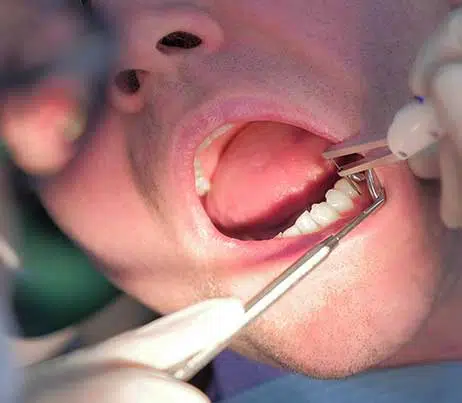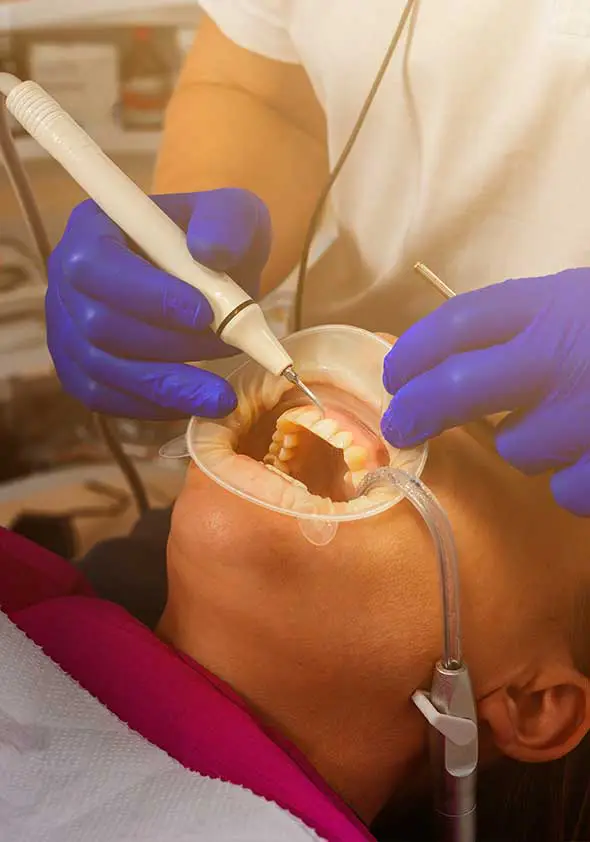Recognizing and Preventing Gum Disease for Better Oral Health and Well-Being

Did you know that gum disease is one of the most common reasons for tooth loss in adults? Because it’s usually painless , many people do not know they have it until it’s too late.
There are two types of gum disease. You are probably more familiar with gingivitis, right? This condition is often associated with redness, swelling, and bleeding. This is often caused by inadequate brushing and flossing.
If left untreated, gingivitis will progress to another type of gum disease, known as periodontitis. This is much more serious as the plaque has already spread down the gum line. As more bacteria grow, more toxins will be released. Your body will constantly fight off toxins through chronic inflammation. This will break down gum tissue and create “pockets,” which can be infected. Over time, both gum tissue and bones are damaged, causing tooth loss.
What Causes Gum Disease?
- Genetics
- Poor oral hygiene
- Food stuck in the gums frequently
- Snoring
- Vitamin C deficiency
- Smoking
- Autoimmune diseases
- Diabetes
- Hormonal changes
- Teeth grinding
- Certain medications
- Chemotherapy
How Will You Know if You Have Gum Disease?
As mentioned earlier, gingivitis will cause redness, swelling, and sometimes bleeding. This usually happens when you brush or floss. More advanced cases will include bad breath that does not go away after brushing or rinsing, swelling, bleeding, or loose teeth.
Do your teeth look longer than usual? This is possible if your gums have already receded. If you are using a partial denture, it may fit differently. Your bite may also be affected.
If you are experiencing any of these signs and symptoms, it is best to consult a dentist immediately.
How Is Gum Disease Treated?
Your dentist will numb the area and perform deep cleaning or scaling to remove calculus underneath the gums up to the root. This will help remove the bacteria that are causing the infection. Your dentist will also smooth down areas of the root, known as planing, to prevent the accumulation and growth of bacteria in the future.
Many patients experience some degree of sensitivity in the treated area, but this often goes away naturally after some time. There will be post-procedure care instructions, which include avoiding certain foods and drinks as well as smoking. You will be scheduled for another visit after about 2-3 weeks to check how the gums are healing and determine if additional treatment is required.
Gum disease can be reversed if properly addressed. Plaque control is the best preventive measure. You need to have professional cleanings at least twice yearly accompanied by regular brushing and flossing. Choose a soft-bristled brush and fluoride toothpaste. This helps remove food particles and plaque trapped in between your teeth and under the gum line.
Catching such issues as early as possible will help keep your mouth and body in prime condition to heal itself. With that in mind, getting a healthy diet, performing regular exercises, and seeing a dentist on a regular basis will help ensure your gums are healthy.

If you are in St. Pete, Pasadena, and other nearby areas in Florida, visit us at Century Dental.
John H. Penny, Jr., DDS & Abdullah M. Allawnha, DDS, along with the rest of the team can help you with any gum problem.

